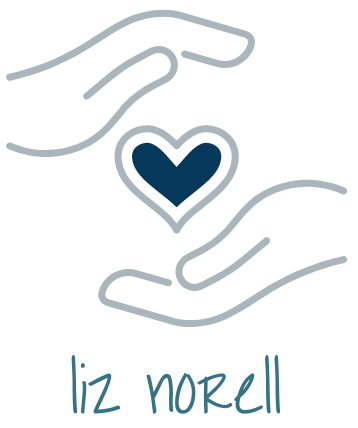On Monday, I wrote about my initial forays into ungrading in the spring semester; yesterday, I thought about some lessons learned in that effort. Today, I want to focus more on the nitty-gritty aspects of how I piloted this strategy last semester, with some very specific examples of how I implemented an ungrading-inspired (but not fully there, not yet) course design.
On average, I teach at least 10 sections of American government, our introductory political science course, per calendar year. It’s required of all our dual-enrollment students, and it’s also on the degree pathway for three popular majors (education, paralegal studies, and social work). Most of our sections are capped at around 30-35 students.
In semesters past, I’ve generally opted for grading on a points system; namely, students earned points, and at semester’s end, I added up those points to convert into a letter grade. I was rather fond of telling students, “Division is hard; addition is easier. I will never, ever calculate a percentage grade.” If a student wanted a higher grade, they simply had to complete additional points-earning work. This system, which I’ve used for years, rewards effort, not mastery; it incentivizes engagement, not performance. It also confused the heck out of students until roughly the next-to-last week of the semester; they would ask me what their current grade is, and I’d say something like, “You have 47 points. You need 65 for a D, 70 for a C, …” and so forth. But that’s not a current grade, and it was confusing.
(Aside: If you ever needed evidence that our prevailing models of assessing student work have caused legions of students to care more about a percentage calculation than their actual learning, just shift to a points-based grading system and watch your inbox flood. Seriously — roughly 85% of my emails from students in the first three weeks of the semester were about the grading system. Not about what they were learning, not about their curiosities or confusions around the stuff I was actually teaching; no, their obsession was over the math I’d use to assess their performance. And it was infuriating.)
So in the spring, I adopted something that looked like specifications grading, sort of. Basically, I required all students to:
- Complete a semester project, each step of which was tied to one of the big three goals of my course.
- Submit an end-of-semester “impact statement,” which I insisted be a video or audio recording of 4-6 minutes in length that shared what about the course, specifically, had the greatest impact on them personally. (Some of these are quite creative; I have the student’s permission to share this utter delight: No-Name Media – Impact Statement.)
- Complete at least 11 self-directed learning activity reflections (see yesterday’s post about the content library).
I then gave students this chart to help them plan their work:

At the midterm, I asked each student to fill out a Microsoft Office-created midterm grade check-in form (our college uses Office 365) sometime in the first two weeks of March (before the end of our spring break); you can access a version that you can duplicate for your own use here. I then took the letter grades they assigned themselves and submitted as their midterm grade; I did not change any of them, although if there appeared to be a wide discrepancy between their reported level of work and what I had seen submitted, I did reach out to that individual student to inquire.
At the end of the semester, I asked students to either fill out a similar end-of-semester self-assessment or schedule a 15-minute one-on-one meeting with me for us to settle on their final grade. Most opted for the form, but a surprisingly large minority did take me up on the opportunity to have the conference. During the finals week, while they were submitting their Impact Statements (which I use as a kind of ‘final’), I met with dozens of students for short, meaningful conversations, at the end of which I asked them to recommend a final grade.
Because I was using the chart, I did not allow the students to entirely set their own grade … and in this respect, I did not fully embrace the ungrading ethos. Nevertheless, the students were able to hold themselves accountable for what work they were able to complete and to reflect on how much they had grown as learners (and as citizens — that part is important, too!) over the semester.
Below are a number of direct quotes from those end-of-semester grade reflections. They do a great job, as a group, of capturing the magic of this semester (these were responses on the final question, which asked the student to explain their thinking on the grade they self-assigned):
- I think this grade makes sense because I worked this semester on my learning activities, I wanted to make sure that they actually meant something and were not just busy work. I also worked really hard to may sure that my semester project was done correctly and I got something from that as well.
- I think this grade makes sense because I completed all of the assignments given and I truly took what I learned from this class and use it almost everyday.
- I think I’ve done well doing the work in this new type of class that I’ve never really had before- and I had fun doing it. I didn’t do homework just to “get it done” so I could get enough learning activities done, I actually put time and effort into it so I could enjoy what I was learning (and I did! I loved everything in the content library that I chose). And I think I’ve achieved a change in myself politically that I didn’t expect, but that marks my growth as a student (I’m able to have better conversations with those I disagree with).
- As someone whose academic forte is not history or government, I felt that I really took advantage of all the things I had available for this class. For me, it wasn’t about just getting the assignments done, it was trying to go as in-depth as possible. There were a few times where I was so mentally drained that I couldn’t do a full-scale analysis of what I had watched/read/etc., but for the most part, I was dedicated.
- I think I put a lot of effort to complete the assignments and not only that the lessons have impacted who I am as a person and who I am politically which shows me that I really took the assignments personally.
- I feel like I have learned a lot from this class and that is present in my reflections and in my responses on this form. I feel like some of my work could’ve been done in a more timely manner, but it did all get done on time. Yay!! Anyways, I also think that the grading system should be used to measure how much you have learned and how much growth has occurred and I would most definitely say I have done both.
- At the beginning of the semester, I was presented with the idea that I was in charge of my learning. It was up to me to get something out of the class and to choose how much I got out of it. Personally, I did the work for an A, but looking back over all that I’ve done I realize that I didn’t just complete the requirements for the grade. I learned something, several somethings. I see how beneficial it is to structure a class this way and appreciate the freedom associated with it as well as the valuable lessons from putting in that work. I am proud of myself because I know that I take more away from this than just a letter grade. I don’t just know that I’ve completed course requirements for an A, I FEEL like I have because I’m a different person coming out of it.
- I got everything I wanted to out of this class. Also, I was able to meet friends and talk to them about our class outside of class time through social media, and we found ourselves talking about our learning activities every time we did them. I guess what’s really more important in the long run than getting all of this work done is that I now have a much better understanding of our American government and the politics involved with it, and that’s what I really wanted to get out of this class with anyways.
- I feel as though I not only learned an astronomical amount from this class, but I also used it to its full potential. All of my work was turned in on time, I completed all of our assignments to the very best of my ability, and I engaged with my classmates. I finished this class proud of the work I have done and honestly eager to learn more. I have never taken a better, more interactive class. I cannot elaborate enough on how much I have gained from this class, academically and personally.
- I believe I put my best foot forward and gave this course all I could. I remember being hesitant on taking an American government class with everything that was going on in the world but after being in class I’m happy I did. I loved that I learned information that was relevant to me and the world around me.
(Aside: I’m not crying, YOU’RE crying!)
(Aside #2: Ok, I’m crying.)
bell hooks writes about “the joys of education as the practice of freedom,” saying that “it allows students to assume responsibility for their choices” (Teaching to Transgress, p. 19). She goes on to say that, “Any classroom that employs a holistic model of learning will also be a place where teachers grow, and are empowered by the process” (p. 21).
I’m inspired by my students daily, as so many of us are. Writing this after attending three mini-graduation ceremonies this morning feels especially appropriate. May each of us find ways to enable this kind of learning and growth in our classes.
Tomorrow, I’m going to talk about something on my mind a lot right now … namely, incomplete grades.
Come back soon for more installments of the #100DaysToFall series.







